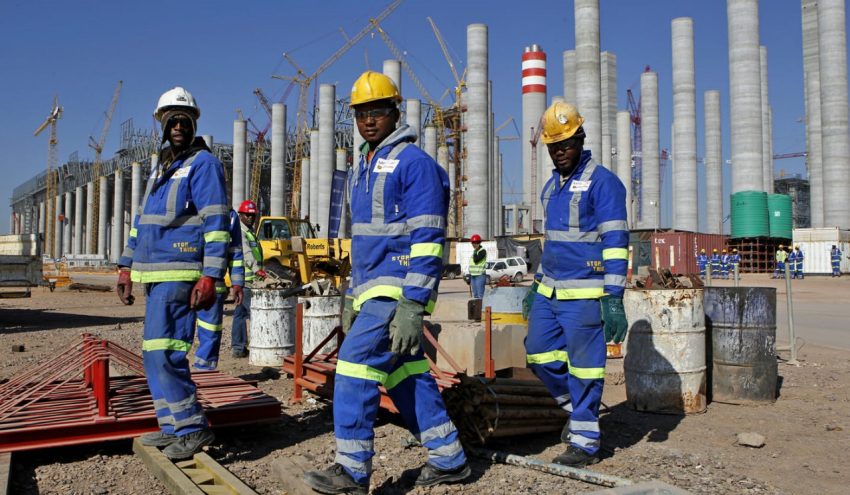In today’s fast-evolving work environment, Safety chat platforms have become indispensable tools for remote and distributed teams. As organizations embrace flexible working arrangements, ensuring effective communication around safety protocols, emergency responses, and incident reporting is critical. This article explores the significance of safety chat platforms, their key features, benefits, and how they enhance workplace safety for remote and distributed teams.
Understanding Safety Chat Platforms
Safety chat platforms are specialized communication tools designed to facilitate real-time, secure, and reliable exchange of safety-related information among team members. Unlike general messaging apps, these platforms focus on ensuring that safety concerns, alerts, and compliance updates are communicated efficiently and transparently.
Why Are Safety Chat Platforms Important for Remote Teams?
Remote and distributed teams face unique challenges in maintaining a cohesive safety culture. Physical distance, lack of immediate supervision, and varying local regulations can make safety communication complex. Safety chat platforms bridge these gaps by offering a centralized, accessible, and consistent channel for safety discussions, helping teams stay informed and responsive regardless of location.
Key Features of Safety Chat Platforms
A robust safety chat platform incorporates several features that distinguish it from standard communication tools. Understanding these features can help organizations select the right platform for their teams.
Real-Time Messaging and Alerts
Immediate notification is critical during emergencies or safety incidents. Safety chat platforms provide real-time messaging capabilities that allow team members to send urgent alerts, ensuring swift action.
Secure Communication
Security is paramount when discussing sensitive safety information. These platforms often use encryption and strict access controls to protect data and maintain confidentiality.
Incident Reporting and Tracking
Many safety chat platforms include integrated incident reporting tools, enabling team members to log safety issues or near-misses quickly. This functionality helps organizations track trends and improve safety protocols.
Integration with Safety Systems
To enhance efficiency, safety chat platforms often integrate with other safety management systems, such as compliance software, asset tracking, or emergency response tools.
Mobile Accessibility
Given the nature of remote and distributed teams, mobile-friendly platforms ensure that safety communication is possible anytime, anywhere.
Benefits of Using Safety Chat Platforms for Remote and Distributed Teams
Implementing safety chat platforms yields multiple advantages, especially for teams not working under the same roof.
Enhanced Communication and Collaboration
Safety chat platforms foster transparent and continuous communication among team members, encouraging collaboration on safety matters and reinforcing a shared responsibility for safety.
Faster Emergency Response
The ability to send instant alerts and coordinate responses can significantly reduce the time taken to react to emergencies, potentially saving lives and minimizing damage.
Improved Safety Compliance
By centralizing safety information and reminders, these platforms help ensure that remote workers remain compliant with organizational policies and local safety regulations.
Data-Driven Safety Improvements
With built-in incident tracking, safety chat platforms provide valuable insights through data analytics, helping organizations identify risks and implement targeted safety measures.
Reduced Isolation of Remote Workers
Remote employees often feel isolated, which can lead to overlooked safety concerns. Safety chat platforms create a virtual safety network, encouraging employees to share concerns and support one another.
Choosing the Right Safety Chat Platform
Selecting the best safety chat platform requires evaluating specific organizational needs and priorities.
Assess Your Team’s Communication Style
Consider how your team prefers to communicate—whether through text, voice, or video—and choose a platform that supports these modes effectively.
Evaluate Security and Compliance Features
Ensure the platform complies with industry standards and local regulations related to data privacy and safety reporting.
Prioritize User-Friendly Interfaces
An intuitive interface encourages adoption and regular use among team members, which is vital for maintaining an active safety communication culture.
Consider Integration Capabilities
A platform that integrates smoothly with your existing safety and operational tools will maximize efficiency and reduce complexity.
Look for Scalability
As your organization grows or adapts, the safety chat platform should be able to accommodate new users, locations, and safety requirements.
Implementing Safety Chat Platforms Successfully
Deploying a safety chat platform is more than just installing software; it involves change management and ongoing engagement.
Training and Onboarding
Provide comprehensive training to ensure that all team members understand how to use the platform and appreciate its importance.
Establish Clear Protocols
Define guidelines for what types of safety information should be communicated through the platform, and how to escalate urgent issues.
Encourage Consistent Use
Promote regular interaction within the platform to build a proactive safety culture. Recognize and reward participation.
Monitor and Review
Regularly evaluate platform usage and effectiveness, gathering feedback to make necessary adjustments.
Future Trends in Safety Chat Platforms
The landscape of safety chat platforms continues to evolve, with emerging technologies enhancing their capabilities.
Artificial Intelligence and Automation
AI can help detect patterns in safety reports, predict risks, and automate routine safety communications.
Enhanced Analytics
Advanced data analytics will provide deeper insights into safety behaviors and outcomes, enabling smarter decision-making.
Integration with Wearable Technology
Safety chat platforms may increasingly link with wearables that monitor worker health and environmental conditions in real time.
Augmented Reality (AR)
AR could enable immersive safety training and real-time hazard identification during remote inspections.
Conclusion
Safety chat platforms are vital tools that empower remote and distributed teams to maintain high safety standards through effective communication and collaboration. By leveraging real-time alerts, secure messaging, incident tracking, and seamless integration with existing systems, these platforms help organizations protect their workforce and enhance overall safety culture. As remote work continues to expand, investing in the right safety chat platform is a strategic move to ensure your team stays connected, compliant, and safe—no matter where they are.
